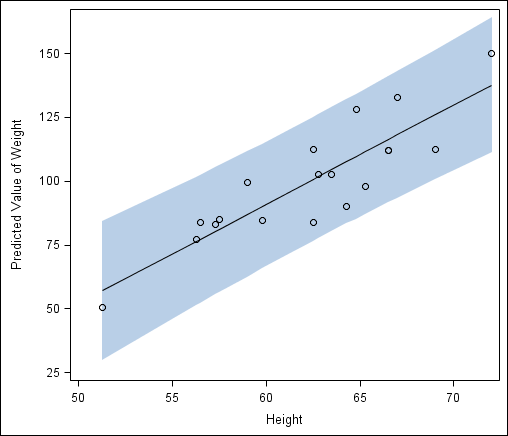Compatible Plot Types
The ODS
Graphics Designer enables you to combine multiple plots together in
a graph cell. For example, you can design overlays from a wide array
of plot types. Some plots, such as histograms and density plots, are
often combined in a graph to achieve an effective overlay layout.
You can
add multiple plots to a graph cell as long as the data types are compatible.
In other words, the axis types for the plots in the cell must match,
whether they are X or X2, Y or Y2.
The following
graph from the Analytical tab of the Graph
Gallery contains several compatible plots, including a band plot,
a series plot, and a scatter plot.
